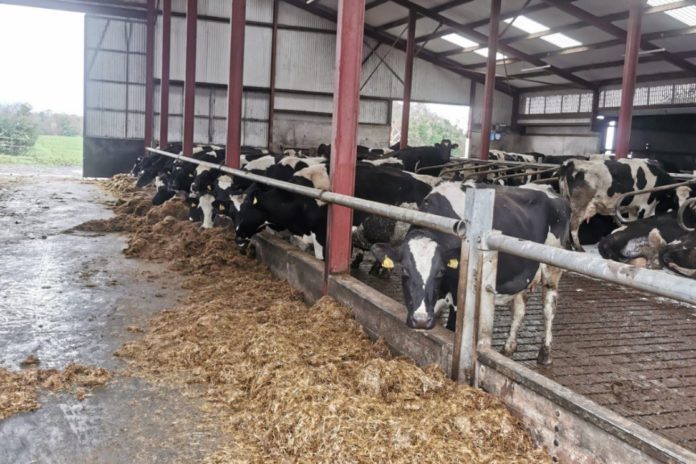At this time of year, you cannot change the forages you have in your silage pits. You can, however, influence the diet your cows eat by ensuring your diet feeder is ready for this winter and that you fill each load correctly and mix completely.
That is according to CAFRE’S senior dairy development adviser, Alan Hopps, who says that many nutritionists use diet feeders to formulate rations but asks if cows are consistently eating the diet formulated for them.
He says a large dairy farm requires a diet feeder to deliver thousands of tonnes of mixed ration every year.
If you do not maintain your mixer wagon properly or your mixing is inconsistent, digestive upsets can result.
To avoid this, dairy farmers should review their approach to diet feeding before the winter commences.
Main issues with a diet feeder
American studies show that the following issues are the main ones causing problems with total mixed rations on dairy farms.
- Under mixing;
- Over filling;
- Dull blades and worn kicker plates;
- Under processing of straw;
- Improper loading of liquids;
- Low inclusion rate products not mixed thoroughly enough;
- Improper Ingredient loading sequence.
You can divide solving these problems into two distinct areas:
- Maintenance of the machine;
- Proper loading and use of the machine.
Tips:
- Ideal time of year to service your diet wagon if required;
- If forages are not chopped as well as they were previously, or the wagon is not emptying completely, it may be a sign that you need to replace the blades or kicker plates as they may be worn;
- Remove any plastic or twine wrapped around moving parts before the busy feeding period commences.
- Calibrate weigh cells properly to ensure optimum feed delivery throughout the winter;
- The same operator should fill the wagon each day if possible;
- Fill the mixer wagon on a level site;
- Add low volume ingredients early to a load of feed to ensure that they are thoroughly mixed;
- Ideally, pre-chop straw before loading into the wagon. Aim for a chop length averaging around 10cm for straw, which you can achieve by using a straw grinder. Cows will not sort straw if it is chopped to this length.
Filling and feeding
- Mix a load of feed for 3-5 minutes after you add the last ingredient;
- If possible, do not fill a wagon any more than 75% full – May help to save time but will lead to poorly mixed rations and will be a false economy in the longer term;
- The smallest load delivered on the farm should at least cover the vertical augers in a tub-type machine. This will avoid feed remaining on top of the augers and the feeder not emptying completely;
- Fill between the augers on a vertical wagon.
Other news articles on That’s Farming:





